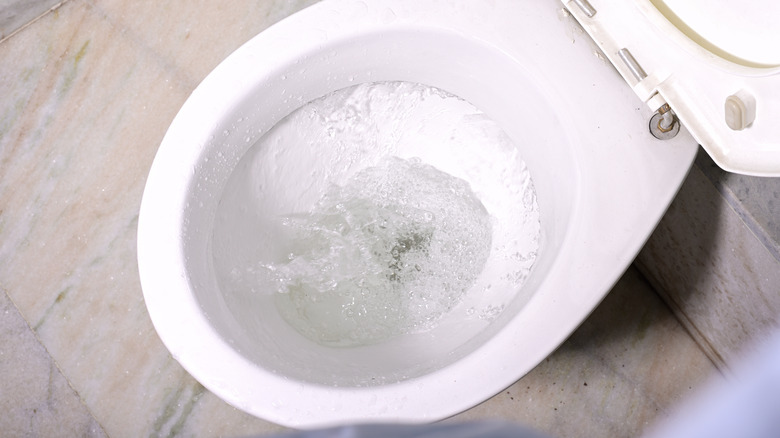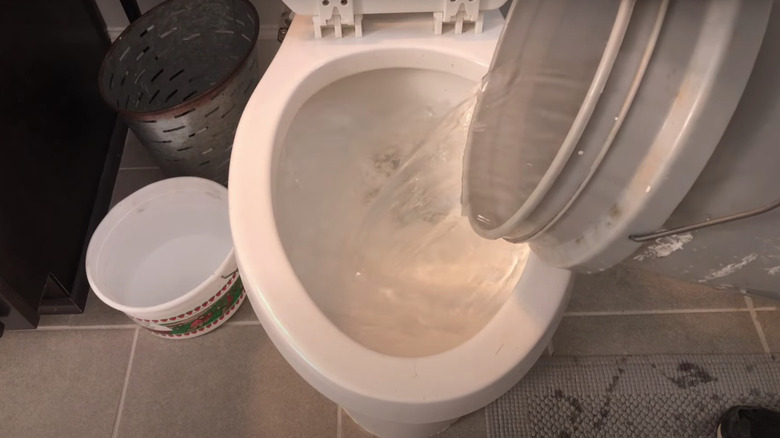How To Flush A Toilet Without Running Water
Without any running water serving your home, you can't flush the toilet — or can you? In this situation, there are actually a couple of hacks you can try to flush, including pouring a bucket into either the bowl or the tank. It's important to note that pressure-assisted toilets may not work with these methods, potentially leaving you unable to flush them when the main line is not functioning.
To use either of these hacks, you need to have some extra water saved before you lose access to your running water. If you know ahead of time that the city is going to be working on the main or that you need plumbing repair work, you can fill a bathtub. You can then use that water to flush the toilet.
If you suddenly lose running water because of an unanticipated main break, you might have to borrow from someone's hot tub or pool. You also could pour bottles of drinking water into the toilet — although admittedly, this isn't the most eco-friendly option.
Flush the toilet by pouring water into the toilet bowl
When a toilet flushes normally, the water in the upper tank rushes into the bowl when you depress the handle. Pressing the handle opens the flapper that plugs the tank until you need it. Once the new water enters the toilet bowl quickly, it uses gravity to force what's already in the bowl through the trap toward the back. A siphoning effect pulls the existing water into the drain line, where it travels through your home's plumbing to the city sewer line. Some of the liquid from the toilet tank remains in the bowl for the next time you need to use the toilet.
So when your water is not running, you need to simulate the flushing action. Fill a bucket with the water you saved in the bathtub. Typically, a 1-gallon bucket will be large enough to make this flushing hack work. Start by pouring the liquid slowly from the bucket into the bowl. Once you start pouring and you're sure that you're not going to create large splashes, pour the remaining liquid out of the bucket quickly. This sudden addition of water to the bowl forces the existing water through the trap and into the drain pipe, essentially simulating the same action that the tank makes when you press the handle to flush the toilet.
Add water to the toilet tank
If you prefer trying to flush your toilet more normally versus dumping water into the bowl and risking a big mess from splashes, you can use your 1-gallon bucket to fill the tank. This option may be easier if you have small children in the home who need to use the toilet — so you don't confuse them about how this appliance works and encourage them to try dumping buckets of water into the bowl.
Before flushing, take the lid off the upper tank of the toilet. Set it aside carefully so you don't chip it. Check the level in the tank. If it's low, pour water from the bucket inside until it reaches the normal fill line — within about 1 inch of the top of the overflow tube, which is a hollow tube usually near the middle of the toilet. With the tank filled, you can depress the handle, which should flush the toilet like normal. You'll need to refill the tank again from the bucket the next time you want to flush.
If you don't have any extra water available because you didn't have any warning about losing your running water, there's enough water in the tank to allow for one flush without requiring running water. The tank just won't refill when you don't have running water, so you can't flush again until everything is back to normal.

